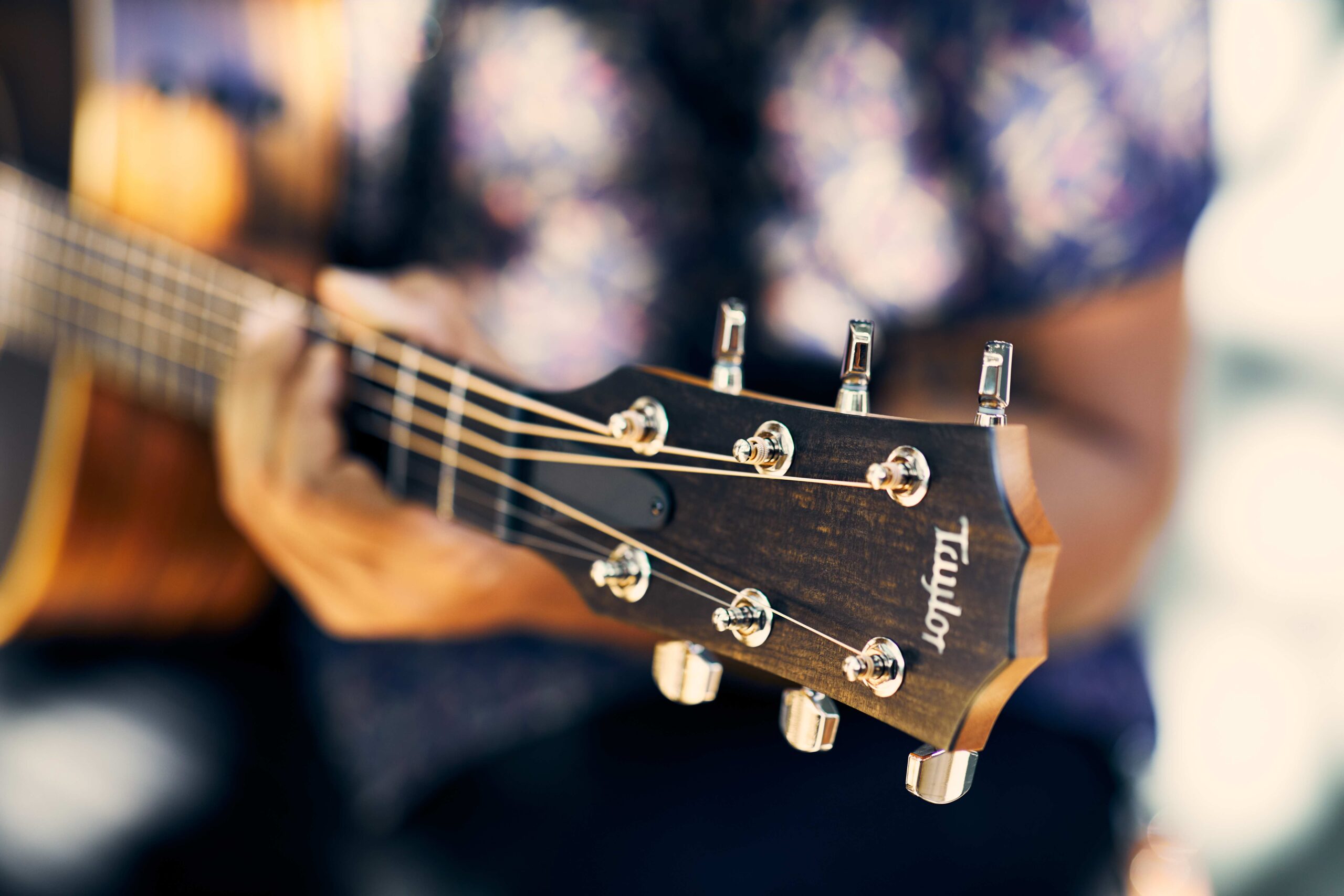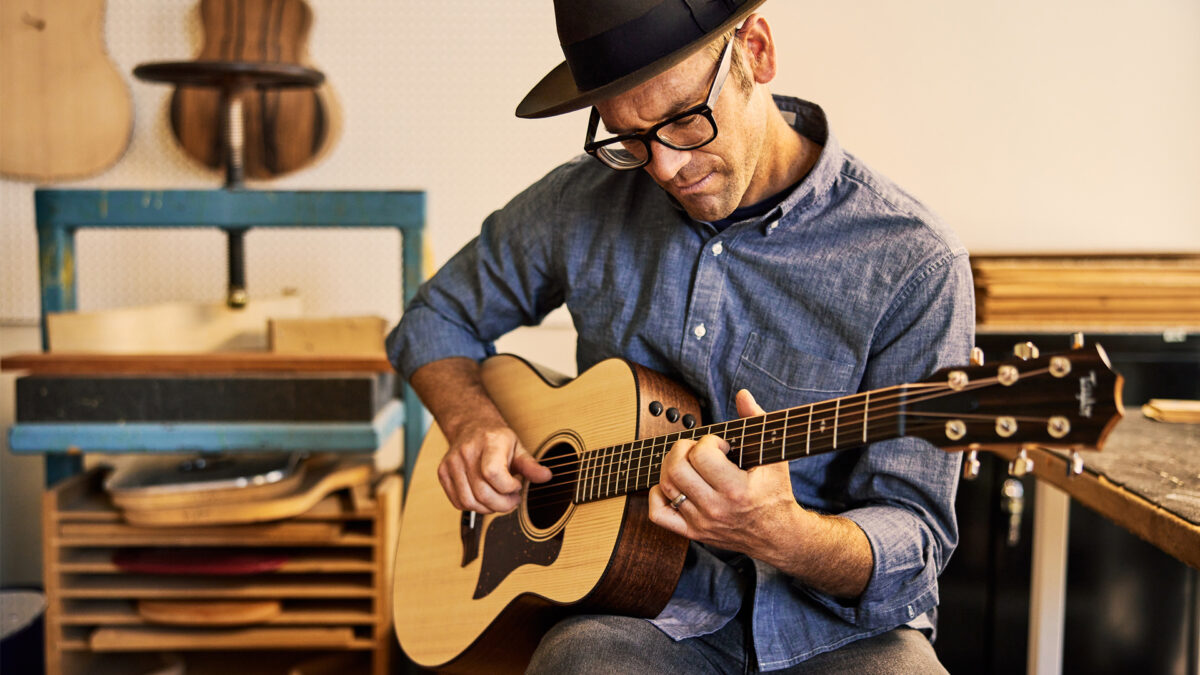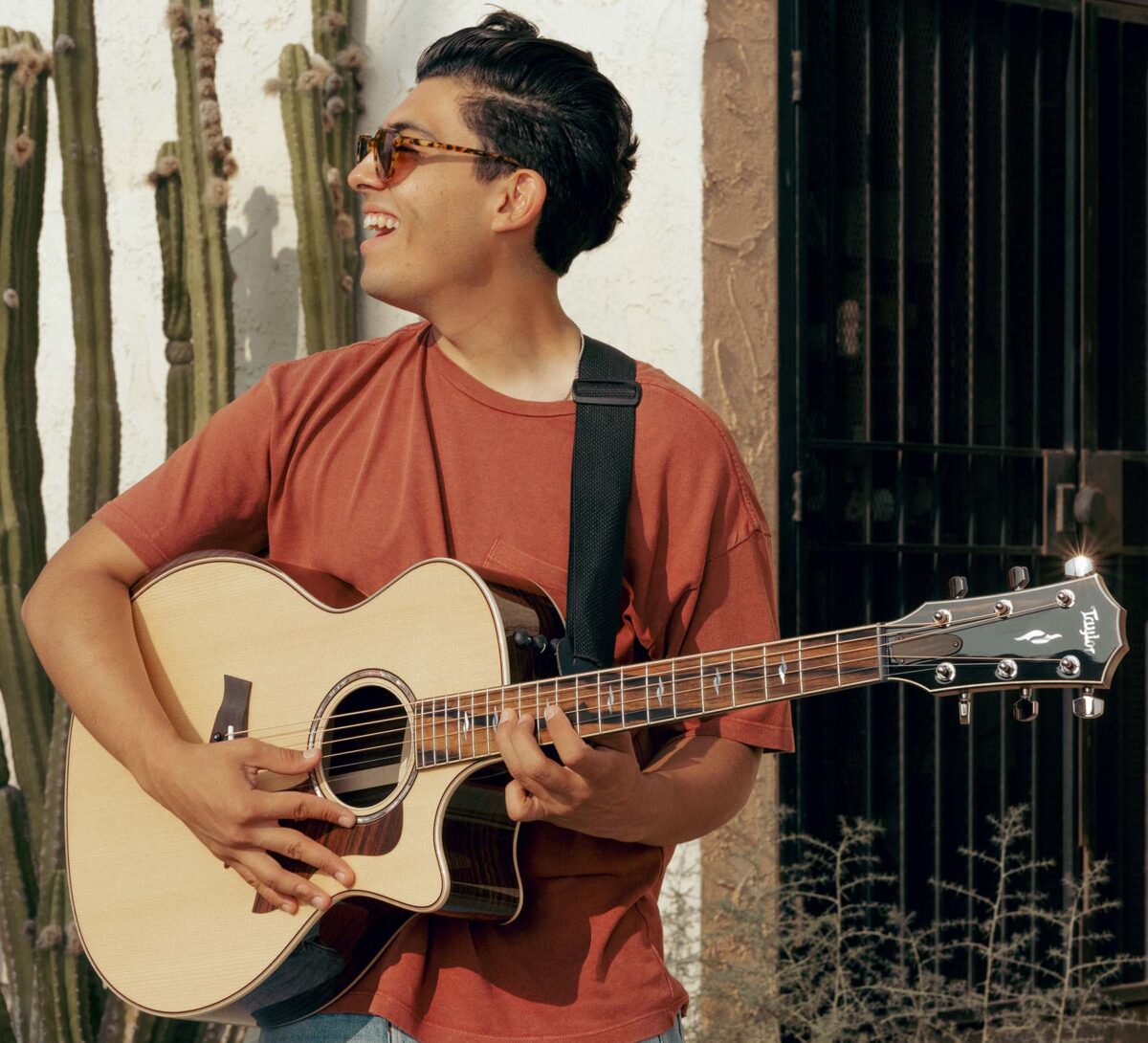If you’re looking for additional tips for choosing the right guitar, especially if you’re buying for yourself and already have experience as a player (and maybe already own a guitar or two), here are some general recommendations based on different playing styles and musical scenarios like recording, performance applications and more.
What’s Your Playing Style?
When we talk about playing style, we mean how you strike the strings when you play. In other words, are you a chord strummer who uses a pick, and if so, how hard do you strum? A flatpicker with a strong attack? A fingerpicker? (And if so, do you use fingerpicks, your nails — natural or acrylic — the pads of your fingers, or some combination of those?) Thinking about this will help you home in on the type of guitar that’s likely to complement your attack. It will also help you decide whether to consider a versatile guitar to cover a range of playing styles or a guitar that suits a more specialized style, especially if you already have other “role-player” guitars in your musical toolbox. Here are a few related thoughts:
For Strumming: Grand Auditorium or Grand Pacific
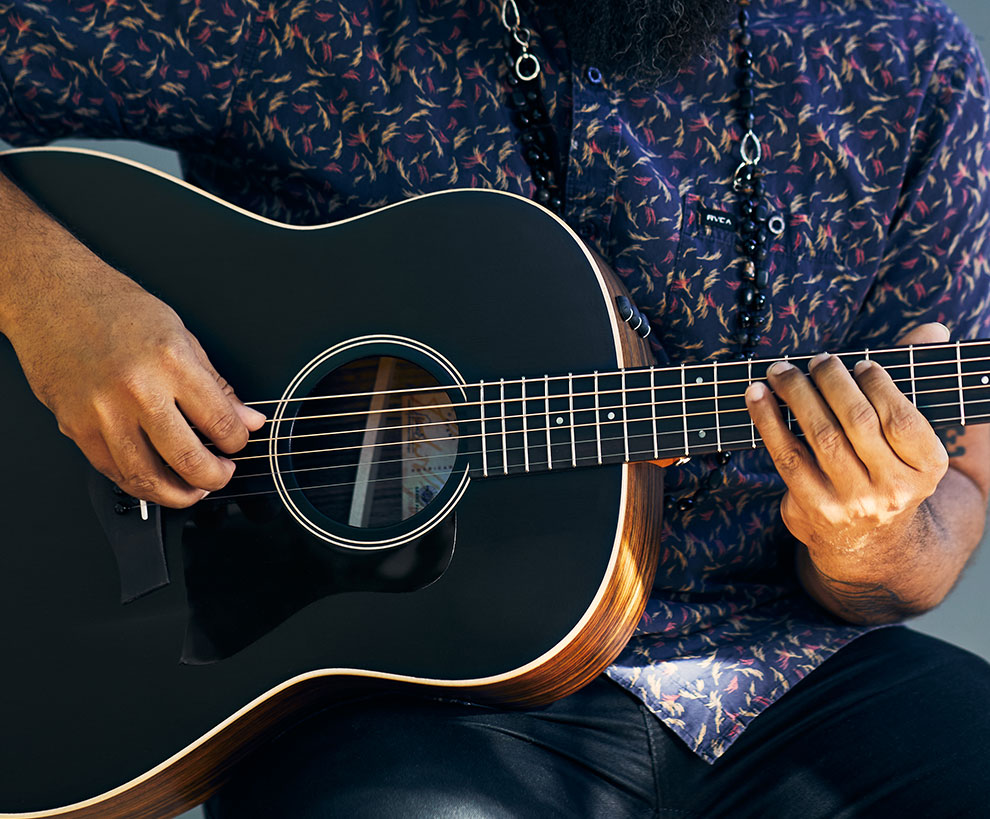
Two strong body shape contenders are our Grand Auditorium (our flagship body style) and Grand Pacific. Both reside in the medium-size category among our full-size guitars, which means they’re big enough to produce a pleasing low-end response without being boomy, respond well to a lively strumming attack, and produce a full-spectrum voice.
Both bodies share similar dimensions — they have the same body length, the same width at the upper and lower bouts, and the same body depth. The biggest physical difference is that the Grand Auditorium has a slightly more tapered waist (about an inch narrower), so if you play sitting down, it will tend to feel slightly smaller because it’ll sit a little lower in your lap. One other distinction is that most Grand Auditorium models come with a cutaway (you can also special-order a non-cutaway), whereas most Grand Pacific models, featuring slope-shoulder dreadnought curves, are built as non-cutaway models.
The basic sonic distinctions between the two tend to fall into two camps: a modern sound (Grand Auditorium) vs. a more traditional sound (Grand Pacific). As our best-known shape, the Grand Auditorium in many respects defines Taylor’s signature acoustic sound — clear and vibrant, with well-defined note articulation. For years, it’s been many a recording engineer’s go-to tool for tracking — it speaks clearly and isn’t boomy on the low-end. Sonically, it stays in its lane.
Comparatively speaking, the Grand Pacific tends to sound a bit warmer and more seasoned (like a slightly older guitar), with notes that blend smoothly. But the traditional sound is refined with master builder Andy Powers’ V-Class bracing under the hood. The bass response is robust but clearer, more musical and more usable, rather than muddy or woofy.
The truth is that both body styles deliver impressive versatility, so if you’re looking for an all-purpose guitar, it’s worth exploring and comparing them in different tonewood pairings.
If you’re looking for a strummer with a big, deep, wall-of-sound voice, you might try our Grand Orchestra body (try a maple/spruce 618e or a rosewood/spruce 818e).
Recording
Honestly, nearly any Taylor makes a good recording tool because of the overall tonal clarity and balance across the frequency spectrum. It might ultimately come down to what fundamental sonic flavor you’re looking to bring to the music you’re making. Here are a few thoughts:
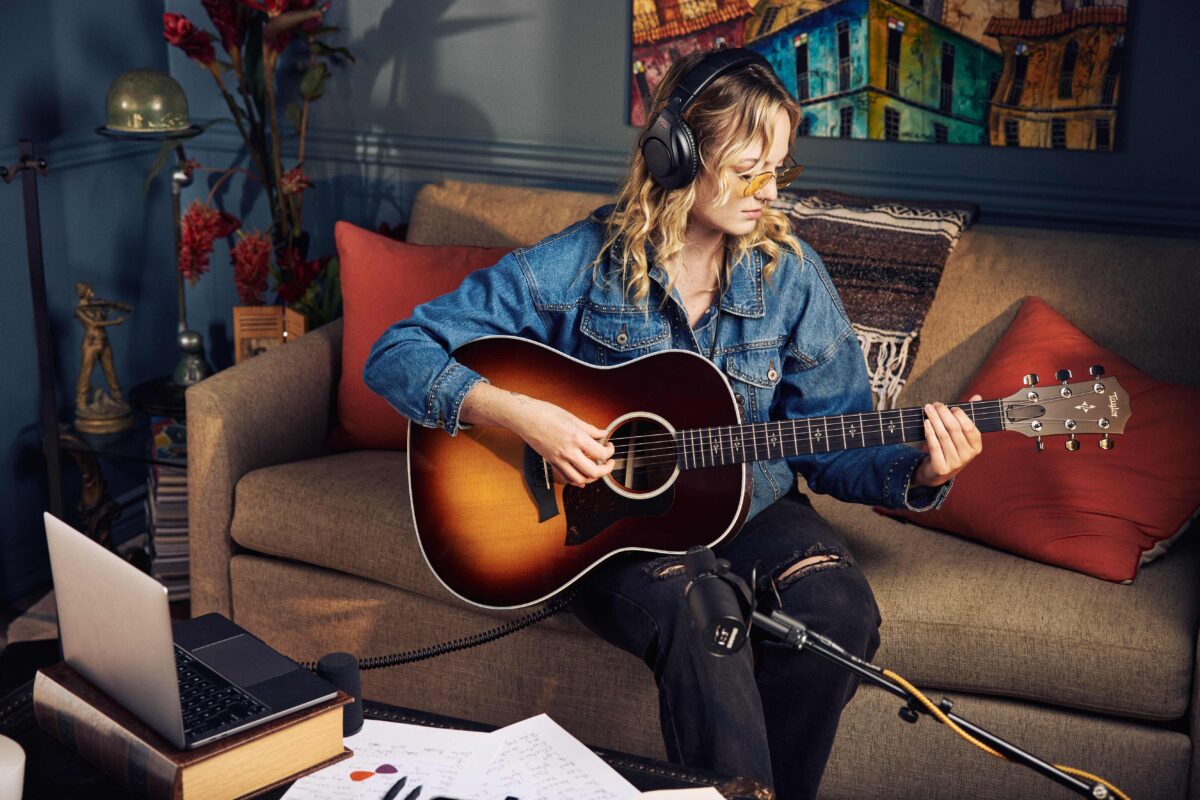
Small-bodied guitars are often well-suited for recording.
For one thing, you’ll either be using microphones or recording direct with a guitar pickup (or both), so pure volume or projection (i.e., a bigger body style) isn’t crucial. Also, smaller-bodied guitars like our Grand Concert tend to produce a more focused, articulate voice, and that smaller, high-definition sonic footprint generally behaves well in a mix with other instruments.
The Grand Auditorium is also a versatile guitar for recording.
In addition to its virtues for strumming that we mentioned earlier, it’s also great for fingerpicking. That Swiss-Army-knife versatility allows it to cover a lot of ground for recording. The voice is clear and full without being bass-dominant. It’s a body style that has been featured on thousands of records across a wide range of musical genres over the years.
A guitar with onboard electronics might serve you well for recording.
More on electronics for performing below, but having a pickup gives you the option of recording direct and eliminating unwanted noise. If it’s hard for you to sit still in front of microphones, recording direct will allow you to capture the sound of your guitar in a consistent way. Some players like to record both ways, giving them two signals to work with, which can provide more options for blending the acoustic sound.
Live Performance
A guitar that’s equipped with an onboard pickup for easy amplification is the most obvious feature to consider for performance applications. If you play in a band, you might want a guitar that cuts through an instrument mix. Maple guitars (such as the 612ce or 614ce) have been popular over the years for their articulation, controlled overtones and somewhat neutral or player-reflective quality. Mahogany is another option for its relatively dry, fundamental-strong flavor. Hardwood-top guitars, made with mahogany or koa tops, for example, tend to amplify well because they smooth the edges off the response, especially for players with a more lively attack, and produce an even response across the frequency spectrum.
Here are three other benefits of having a guitar with a pickup:
1. You have the ability to manipulate your sound.
Our pickups come with an onboard preamp featuring tone controls that allow you to adjust the bass, midrange and treble levels of the guitar in an amplified setting. This EQ control gives you a broader range of acoustic colors to suit different songs or playing scenarios.

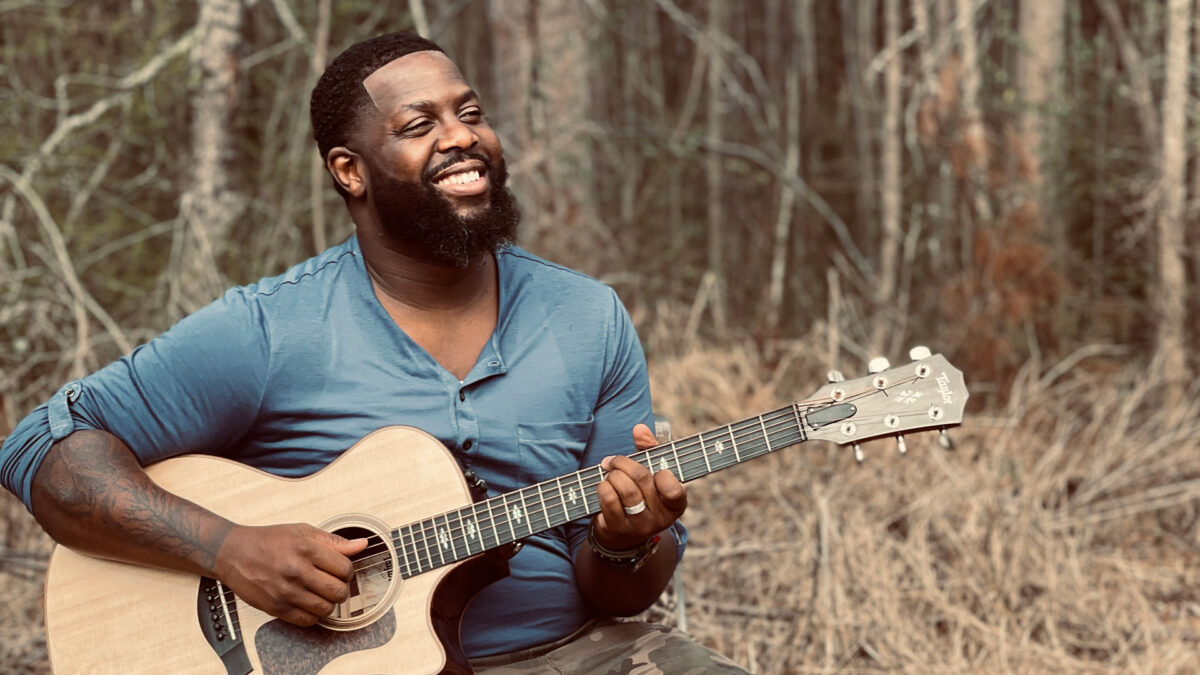
2. You can incorporate other effects into your amplified acoustic sound.
The ability to add effects like reverb, delay and other flavors gives you a whole new sonic palette with which to experiment in an amplified (or recording) setting.
3. You can easily balance volume levels if you play with other instruments.
As one gigging Taylor player shared, he regularly performs house concerts accompanied by a mandolin player. In an intimate setting, the natural acoustic volume of the mandolin overpowers that of his acoustic guitar. By plugging in, each can control his output level to create a clear and balanced sound together with the mandolin.
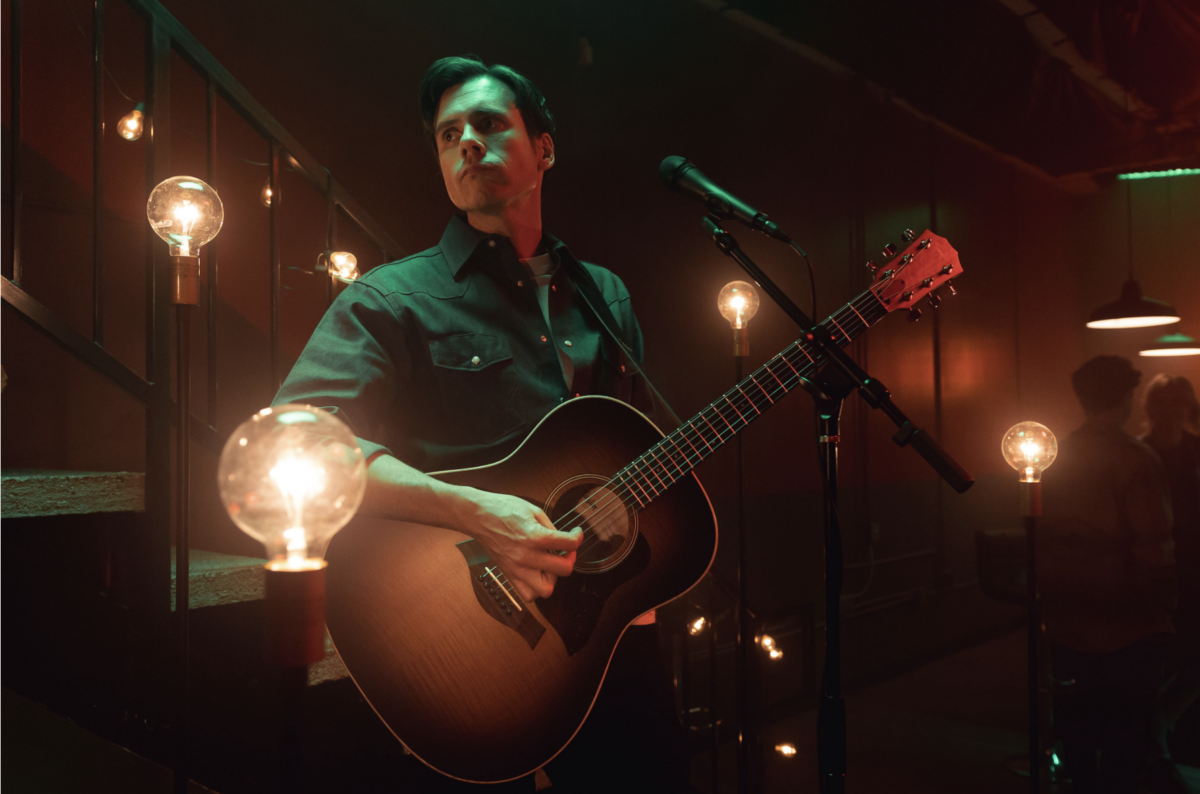
What styles(s) of music do you want to play?
Think of the type of sound you need to express that style or musical genre. For example, an aggressive picker or someone who plans to strum big, open cowboy chords might want a bigger body that’s capable of producing robust bass, volume and projection. Here are some general recommendations relating to a few musical genres.
- ›Bluegrass/flatpicking: Grand Pacific (try a 517e) or other medium or large body for maximum volume and projection.
- › Country/Blues fingerpicking: Small to medium body — mahogany is a popular choice for the back and side wood for its warmth and wood midrange. An all-mahogany guitar (also featuring a mahogany top) will tend to have a slightly darker sound. Walnut (American Dream Series) and ironbark (500 Series) are other back and side woods worth exploring.
- › Acoustic rock/country/pop strumming: Try a medium-size body like a Grand Auditorium or Grand Pacific for rich, open chords.
- › Singer-Songwriters: This is entirely up to the person. We encourage people to start by finding a body style that’s most comfortable for them to play, and then sample and compare that body style with different tonewood pairings. You should also sing with the guitar when you audition it — you’re looking for an acoustic guitar voice that complements yours. Trust your feeling and choose the one that inspires you the most.
Aesthetic Details
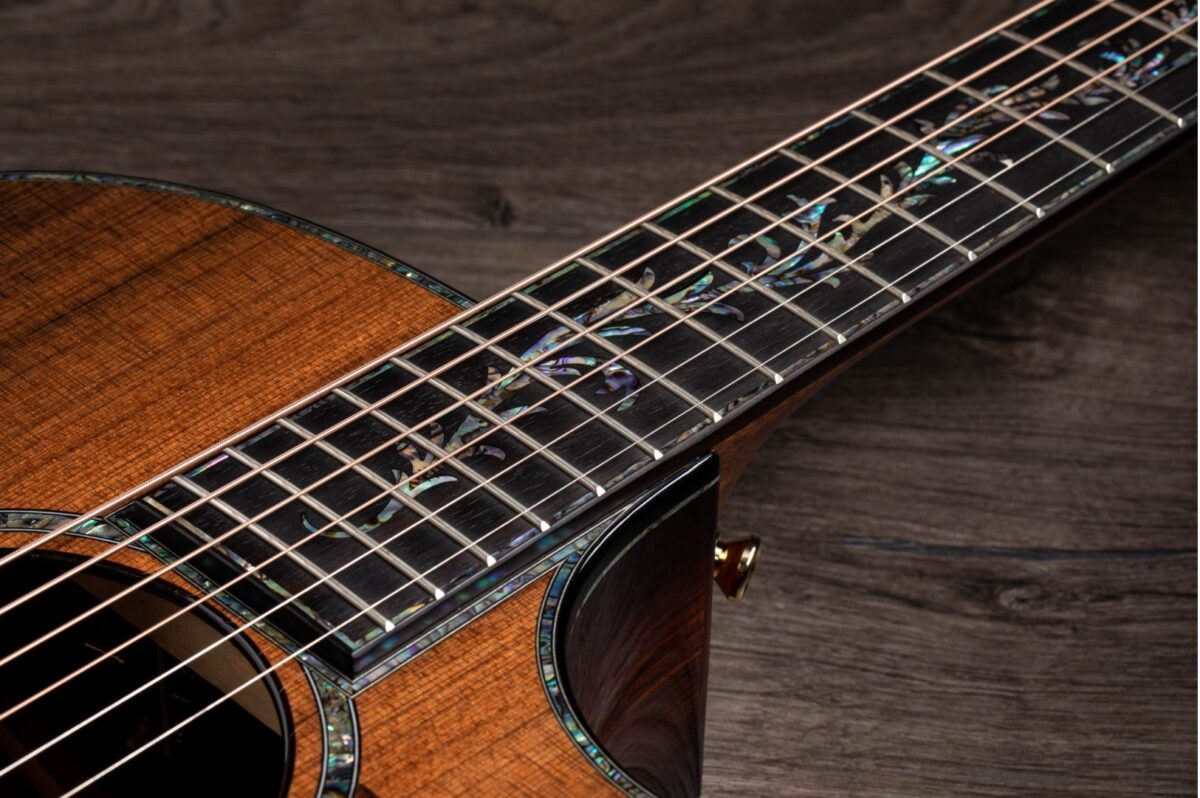
This is ultimately a matter of personal preference. Visual inspiration is certainly part of a guitar’s appeal — it certainly creates a first impression — from its body contours to the wood grain to its decorative elements, which can range from minimalist to richly ornate.
Generally speaking, the higher you ascend up the Taylor line, the more premium or detailed the appointments and craftsmanship refinements tend to be. In recent years, we’ve introduced a wide range of artful edgeburst or sunburst top options across the entire line. The finish sheen is another consideration — some guitars have a more natural-looking, low-sheen matte-style finish, while others present a more luxurious look with a glossy finish. Here are a few categories:
› More decorative detail: 900, Presentation Series, custom models
› More understated, workmanlike: Academy, American Dream, 100 Series
› Wood lovers: Koa models across the line, including the GS Mini, 200, 700 and Koa Series, Presentation Series (Honduran rosewood/sinker redwood), 900 Series (rosewood/spruce), 600 Series (figured maple/torrefied spruce)
Expanding Your Musical Arsenal
If you (or someone you’re buying for) are looking to diversify your acoustic guitar lineup or are looking to spark some fresh creative ideas, look for something that offers a different playing experience and musical personality and thus expands your musical palette. Maybe it’s a different body style or tonewood pairing; maybe it’s a different type of guitar: a 12-fret or a 12-string, or perhaps a nylon-string or bass guitar. See more on our specialty models below.
› 12-Fret
Some Taylor Grand Concert models are offered with a 12-fret design, which references the position where the neck meets the guitar body. (On other Taylor steel-string models, the neck meets the body at the 14th fret.) By design, a 12-fret neck is slightly shorter than our 14-fret neck, with two fewer total frets. The different positioning of the neck relative to the body shifts the bridge location away from the soundhole, closer to the center of the lower bout. This changes the way the soundboard moves, producing extra power, warmth and sustain for a smaller body style.
Our 12-fret models also have a slightly shorter string scale length (24-7/8 inches compared to 25-1/2 on most other full-size models). Together with the repositioning of the bridge to a more flexible spot on the soundboard, the handfeel is slightly softer and slinkier, making it easier to form chords and bend strings, especially with the shorter scale length. (Anyone looking to reduce the stress on their fretting hand should test-drive a 12-fret guitar.) The closer neck/body relationship also brings the player’s fretting hand closer to the body, creating a more intimate playing experience.
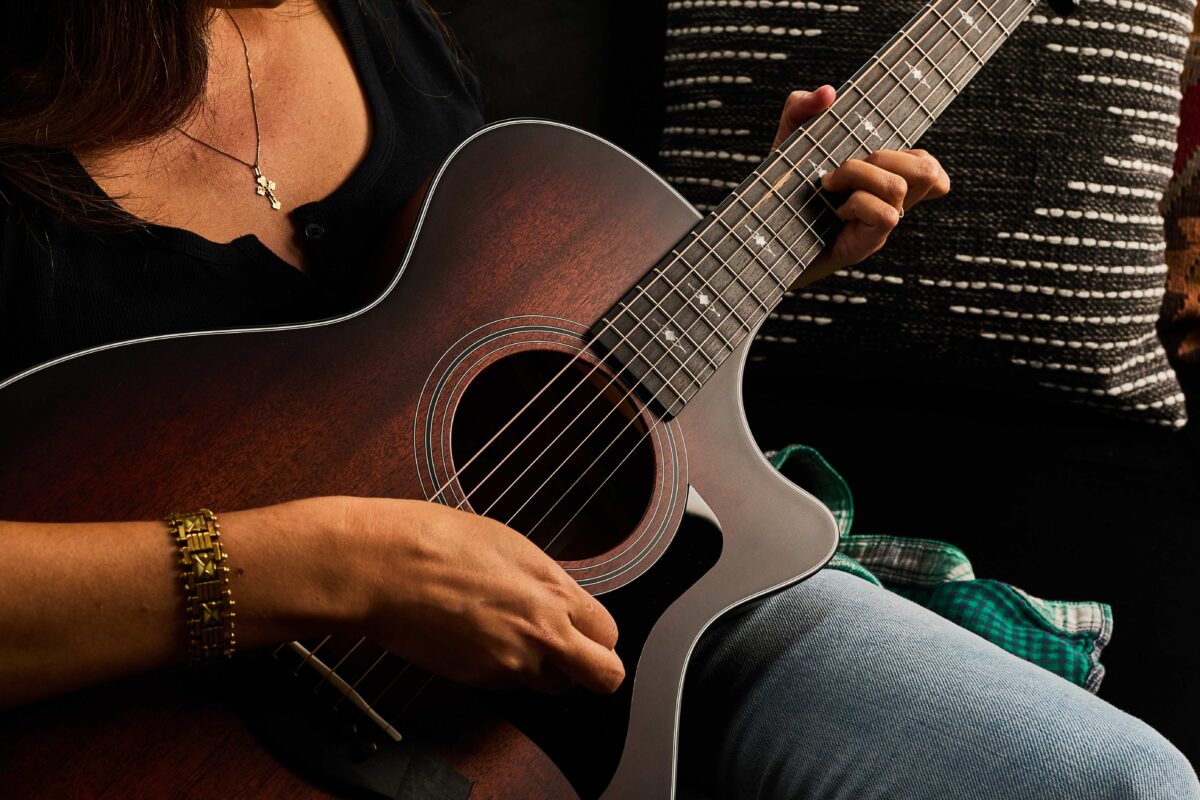
› Nylon-String
Nylon-string guitars deliver a different feel and sonic flavor compared to steel-string guitars — mellower and yet capable of percussive rhythmic textures. Our nylon-string guitars are easier to play than a traditional classical guitar — they were designed to be inviting and comfortable for steel-string players. The radiused fretboard makes fretting easier, and the slimmer neck profile offers a smooth crossover from a steel-string. If you find it difficult to play a steel-string acoustic, you might try the lighter string tension of a nylon-string guitar. It’s also a creative tool that adds another musical texture to a music track. If you’re looking for a nylon-string guitar on a budget, check out the Academy 12e-N, which features a built-in armrest. It’s a great guitar.
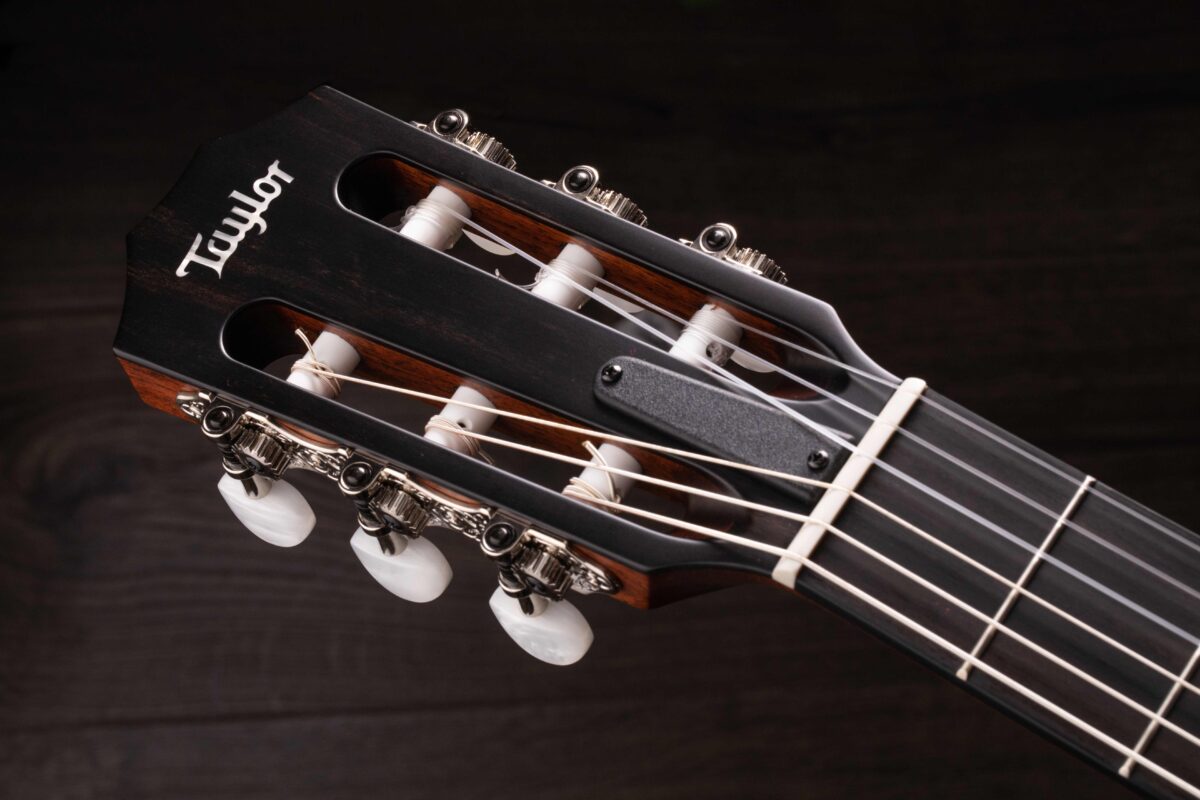
› 12-String
With their lush, shimmering sound from extra octave strings, 12-string guitars offer another wonderful voice to explore. One of the historical challenges of 12-strings in the guitar industry was that they were often hard to play. With our slimmer necks and easy playability, Taylor 12-string guitars made the experience much more accessible.
More recently, Andy Powers made the playing experience even easier by embracing our smaller Grand Concert body. The result is a 12-string that’s physically more compact and responsive to a lighter touch. A Grand Concert 12-string also mixes well with other instruments on stage or in a recording environment. The internal V-Class bracing featured on our U.S.-made 12-strings also enhances the tuning precision and harmony between notes, giving these 12-strings a beautiful clarity.
For an all-solid-wood 12-string try our new ironbark/spruce 552ce. For a more budget-friendly option, consider our 150e. It features a larger, non-cutaway dreadnought-style body, but the playability is signature Taylor. For years, it’s been one of the top-selling acoustic 12-strings in the industry.
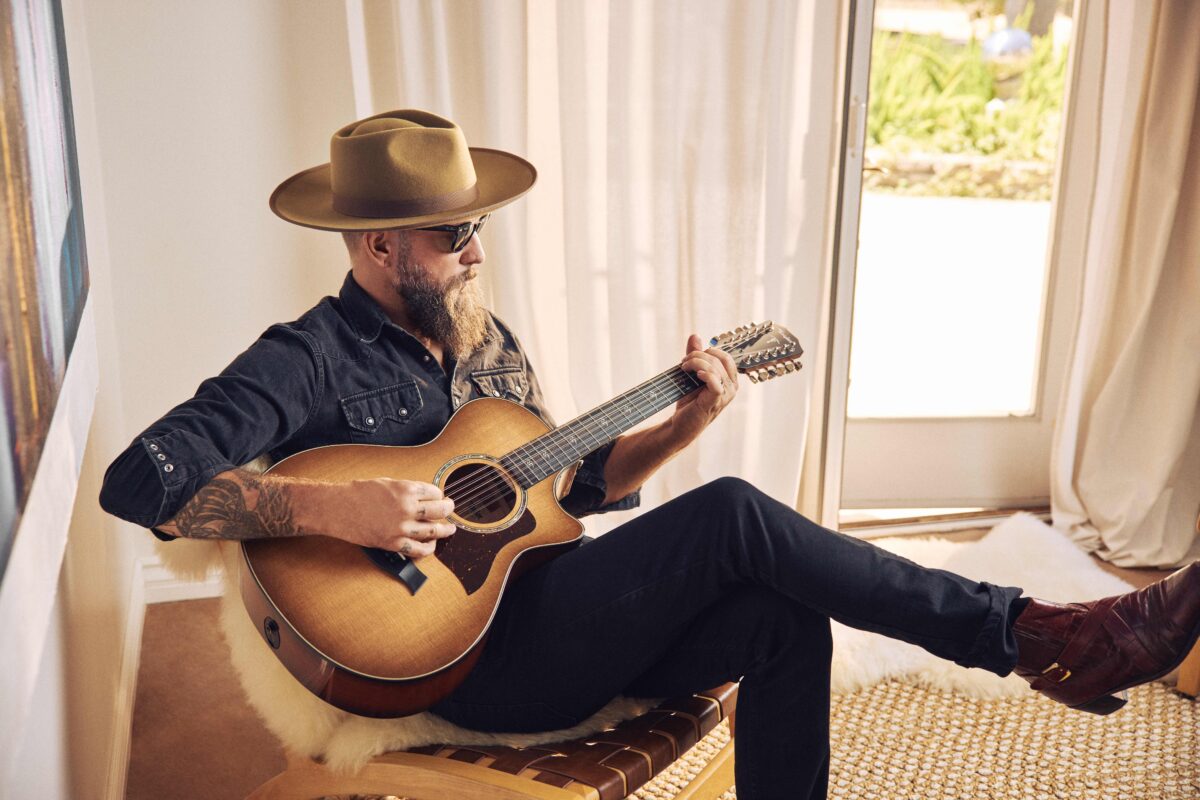
› Baritone
While it probably won’t be a player’s primary guitar, a baritone acoustic makes a flavorful addition to one’s acoustic palette. Our baritone models are tuned from B to B and have a 27-inch scale length, yielding a deep, resonant voice, yet with normal string tension for a familiar playing experience. And you can simply add a capo to the fifth fret and you’re in standard concert pitch. Players who sing in a lower vocal range might enjoy exploring the baritone sound, and it’s a great option for weaving walking basslines into your playing. Typically offered in special-edition runs, we make our baritone as both a 6-string (see our AD26e Baritone-6 Special Edition in this issue) and an 8-string, the latter featuring two upper octave strings, to produce a splash of 12-string shimmer without being as jangly as a full 12-string.
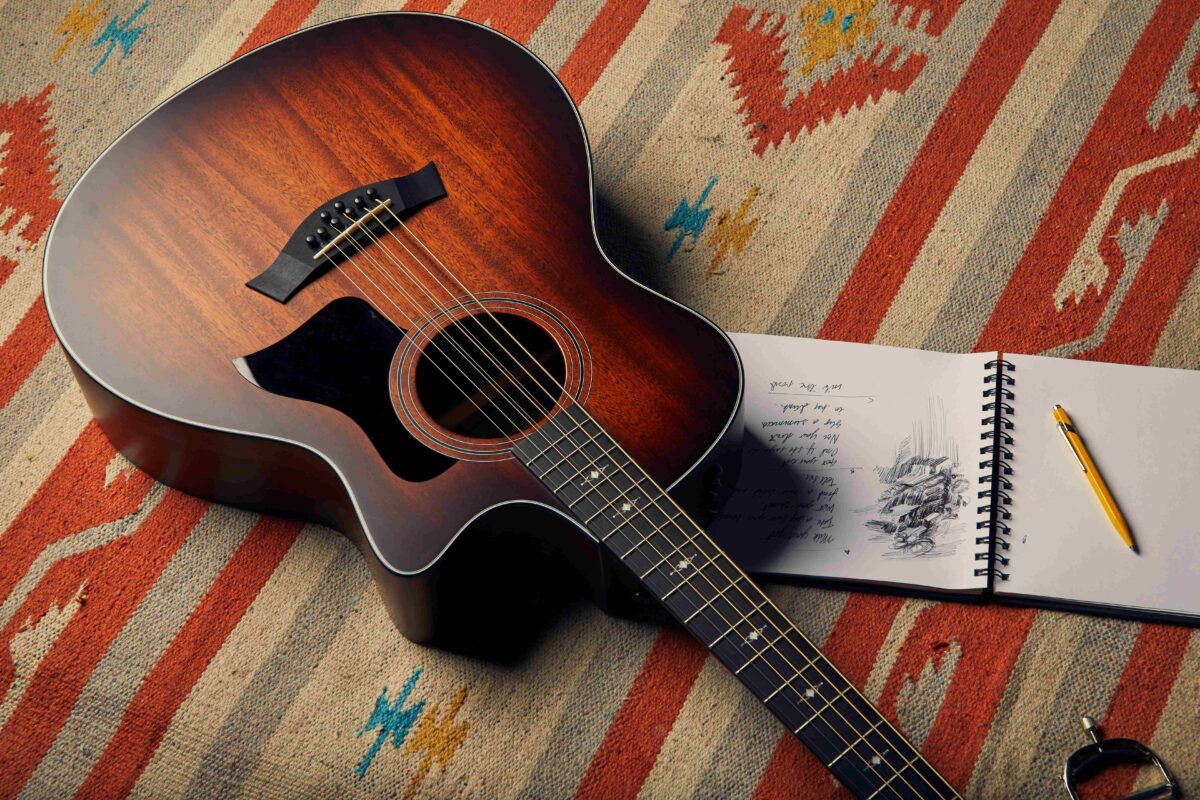
› Acoustic Bass
We’re here to tell you that our GS Mini acoustic bass is a fantastic musical tool for music makers. Many folks can already appreciate the approachability and sound of our 6-string GS Mini guitars. To be able to have a great-sounding bass guitar in this compact form is truly remarkable (an acoustic bass normally requires a much longer scale length), and it’s only possible because of Andy’s design collaboration with our friends at D’Addario to formulate a custom string set with nylon-core strings that give it a slinky feel
“If bass isn’t your primary instrument but you want an acoustic bass on hand for writing, for recording some demos, to have when your friends come over to jam, this is the bass you want,” Andy Powers said when we first released the bass in 2017. “Anybody can play it. You don’t need calluses on your fingers. It’s physically easier than a guitar. The short string length and the nylon core strings make it so comfortable to play that even a kid or a beginner could walk up to it and not be intimidated.”
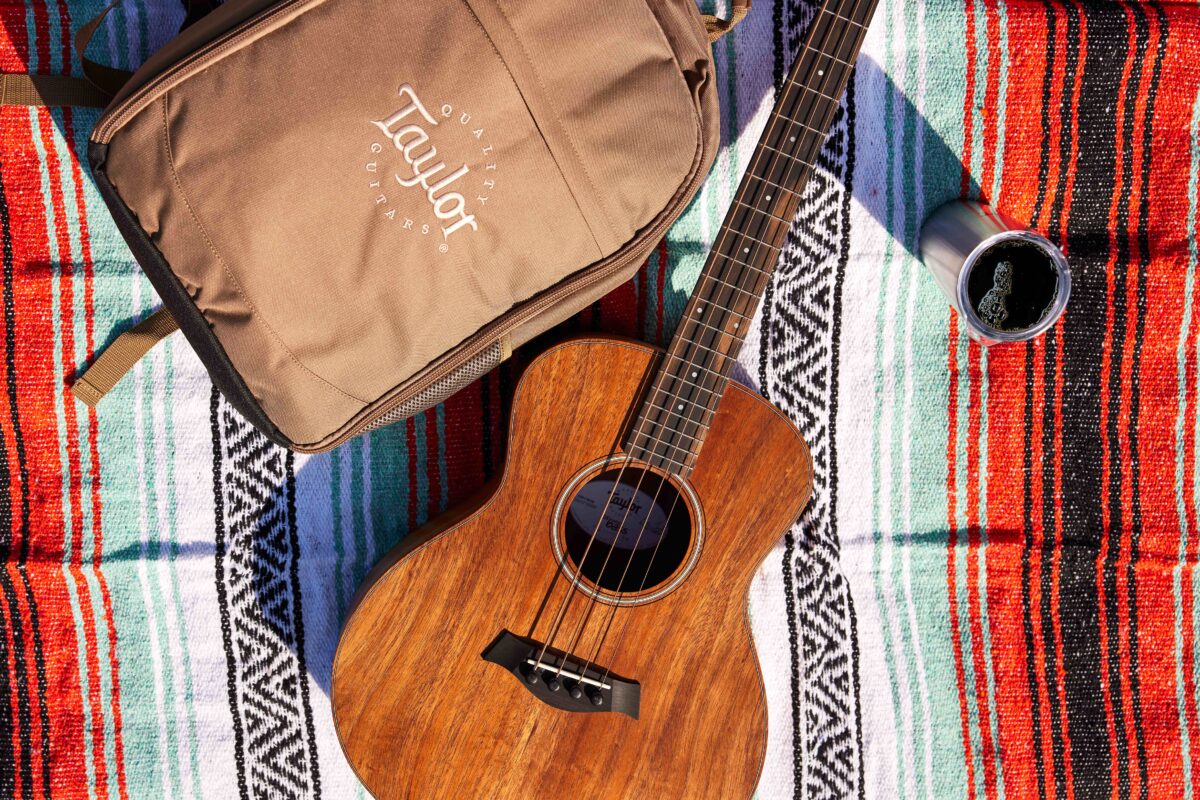
Other Guitar-Buying Categories
› For the lover of high-end craftsmanship:
Consider the upper portion of our guitar line or our Builder’s Edition collection, which showcases our most advanced craftsmanship, special ergonomic features such as an armrest, tone-enhancing nuances, and in many cases, detail-rich appointments.
› For the couch strummer:
You obviously want something with a smaller body that’s easy to cradle. Consider a GS Mini or one of our compact Grand Theater models, like the AD11e-SB. Or perhaps a 12-fret Grand Concert.
› For the traveler:
When it comes to ultra-portability, size matters. In our sub-compact category, our smallest guitar is the ¾-size Baby Taylor. There’s also the larger Big Baby, but it’s shallower body depth compared to a standard guitar gives it a more accessible feel against your body. The GS Mini is an immensely popular choice because it packs a lot of tone into a compact form and because it’s not too precious to take out into the world and have fun. The Grand Theater is slightly larger but smaller than full-size, and it’s built with all-solid-wood construction, giving it a more refined sound.
› For someone who wants a standard model — but with a twist:
We offer a menu of standard model options, so if you really like a particular model but would like it with a modified feature that better suits your musical preferences — maybe without a cutaway or with a different nut width or tuning machines, or maybe a sunburst top — you can always special-order that from a dealer.
Continue Your Holiday Buying Guide Journey
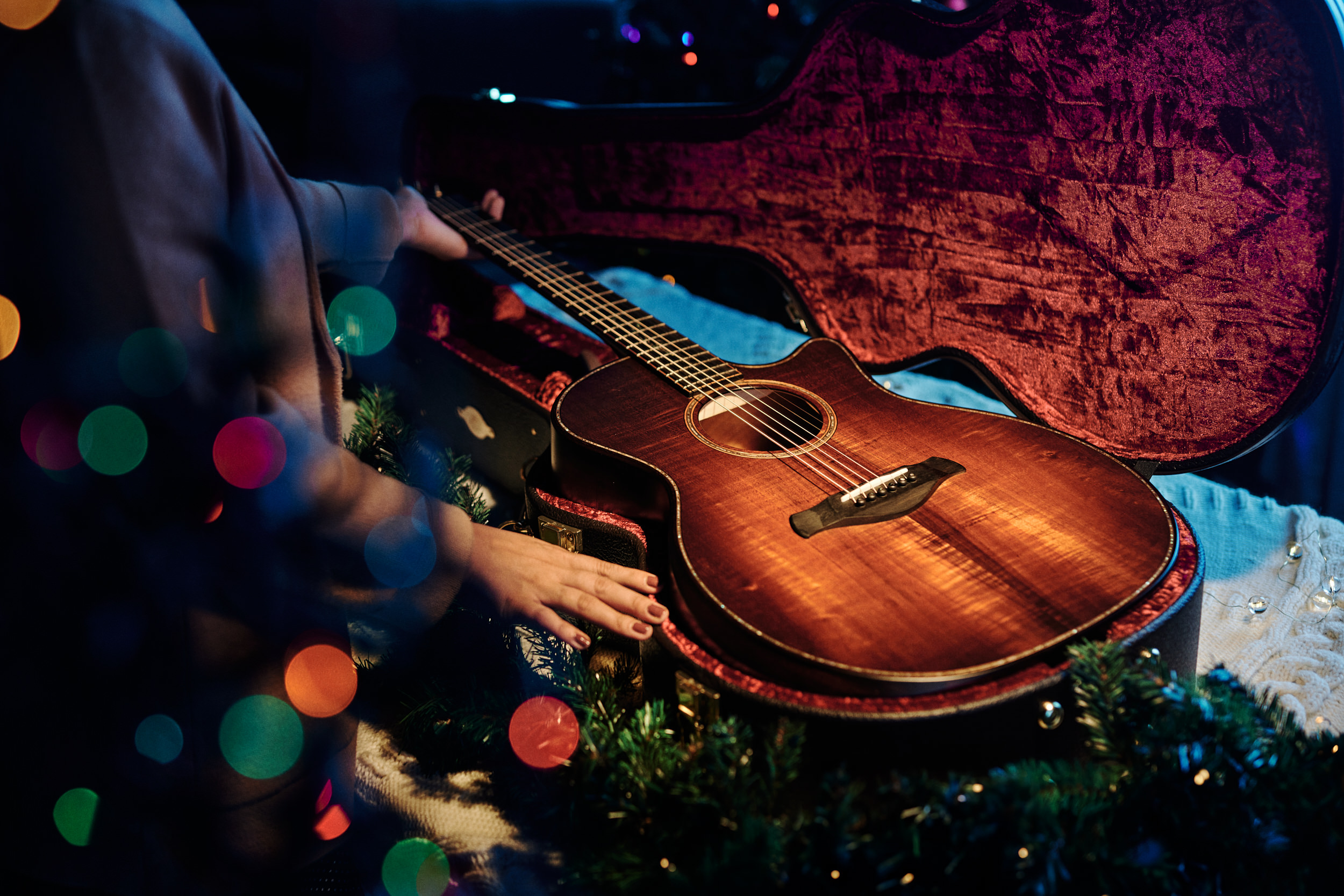
Part 1
How to Buy a Guitar: The Holiday Shopping Primer
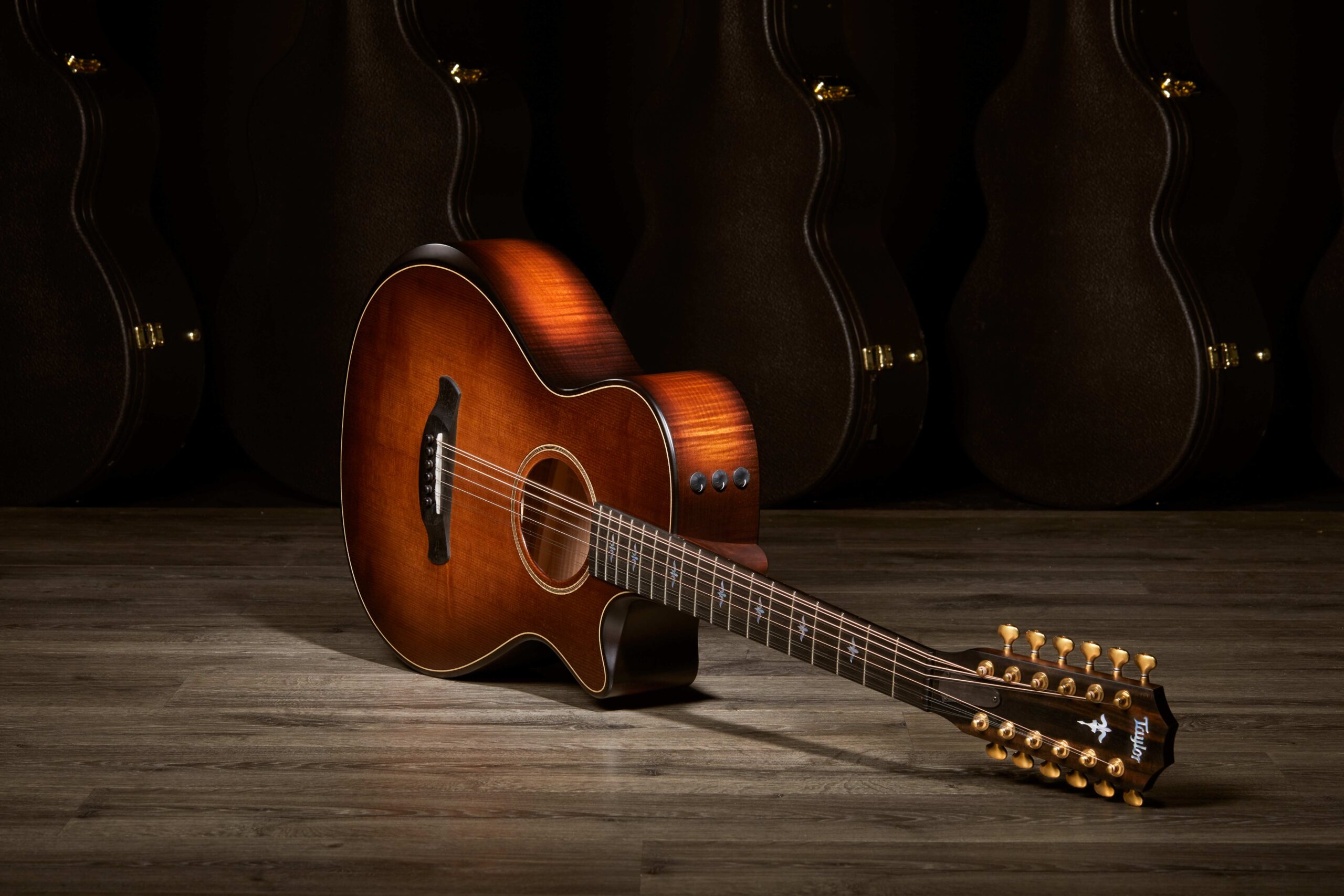
Part 3
Players’ Choice: Gift Picks
from the Taylor Team
